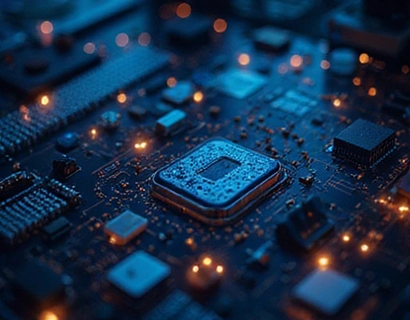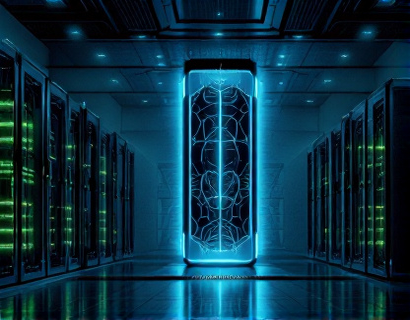Transforming Registry Management: The Power of Blockchain-Enabled Software
In an era where data integrity, security, and efficiency are paramount, the traditional methods of registry management are being revolutionized by blockchain technology. This article delves into how blockchain-enabled software is transforming the way professionals and enthusiasts approach data management, offering unparalleled security, transparency, and efficiency. Whether you are a registry management professional, a data security advocate, an IT and software development team member, a government regulatory body, or a business process optimization expert, understanding the potential of blockchain in registry management is crucial for staying ahead in the digital transformation landscape.
Understanding Blockchain Technology
Before exploring its applications in registry management, it's essential to grasp the fundamentals of blockchain technology. At its core, a blockchain is a decentralized digital ledger that records transactions across multiple computers in such a way that the registered transactions cannot be altered retroactively. This technology ensures transparency, immutability, and security, making it an ideal solution for managing sensitive and critical data.
Blockchain operates on a network of nodes, each maintaining a copy of the entire ledger. When a new transaction is initiated, it is broadcast to the network, where it is verified by nodes through complex algorithms. Once verified, the transaction is grouped with other transactions in a block, which is then added to the chain in a linear, chronological order. Each block contains a cryptographic hash of the previous block, a timestamp, and transaction data, creating an unbreakable link and ensuring the integrity of the entire chain.
Enhanced Security in Registry Management
One of the most significant advantages of blockchain-enabled registry software is its enhanced security features. Traditional registry systems are often centralized, making them vulnerable to cyber attacks, data breaches, and unauthorized access. In contrast, blockchain's decentralized nature distributes data across a network, eliminating single points of failure and significantly reducing the risk of security breaches.
The cryptographic techniques used in blockchain ensure that once data is recorded, it cannot be altered without consensus from the majority of the network. This immutability feature is particularly valuable in registry management, where the accuracy and integrity of data are critical. For instance, in land registry systems, blockchain can prevent fraudulent transactions and ensure that property ownership records are tamper-proof.
Transparency and Trust
Transparency is another cornerstone of blockchain technology, and it plays a vital role in building trust in registry management. In a blockchain-based system, all transactions are visible to network participants, providing a clear and auditable trail. This level of transparency helps in reducing corruption, increasing accountability, and fostering trust among stakeholders.
For example, in government registries, blockchain can ensure that public records, such as voter registration data or corporate filings, are accessible and verifiable by authorized users. This not only enhances public trust but also reduces the administrative burden on government bodies by automating verification processes.
Efficiency and Automation
Blockchain-enabled registry software not only enhances security and transparency but also significantly improves efficiency through automation. Smart contracts, self-executing contracts with the terms directly written into code, can automate routine tasks and workflows in registry management. These contracts automatically trigger actions when predefined conditions are met, reducing the need for manual intervention and minimizing errors.
In property registry systems, smart contracts can automate processes such as property transfers, tax payments, and compliance checks. For instance, when a property owner updates their address, a smart contract can automatically update the registry, ensuring that all relevant parties are informed in real-time. This automation streamlines processes, reduces administrative costs, and accelerates transaction times.
Use Cases in Various Industries
The applications of blockchain-enabled registry software extend beyond traditional registry management to various industries. Here are some key use cases:
- Land Registry: Blockchain can streamline land registration, reduce fraud, and ensure accurate property ownership records.
- Supply Chain Management: Tracking the provenance and movement of goods can be enhanced, ensuring authenticity and compliance with regulations.
- Healthcare Records: Patient data can be securely and privately managed, ensuring that medical records are accurate and accessible only to authorized personnel.
- Voting Systems: Blockchain can provide a secure and transparent platform for electronic voting, reducing the risk of tampering and increasing voter confidence.
- Identity Verification: Digital identity management can be secured and decentralized, giving individuals control over their personal data.
These use cases demonstrate the versatility and potential impact of blockchain in various sectors, making it a valuable tool for professionals looking to innovate and improve their processes.
Challenges and Considerations
While the benefits of blockchain-enabled registry software are clear, there are several challenges and considerations that organizations should be aware of:
First, the technology is still relatively new, and there is a learning curve associated with implementing and managing blockchain systems. Organizations need to invest in training and development to ensure their teams are equipped to handle these advanced technologies.
Second, scalability remains a challenge for many blockchain platforms. As the volume of transactions increases, the network's performance can be impacted. However, ongoing developments in blockchain technology, such as layer 2 solutions and sharding, are addressing these issues.
Third, regulatory frameworks for blockchain are still evolving. Organizations must stay informed about local and international regulations to ensure compliance and avoid legal pitfalls.
Implementing Blockchain in Registry Management
For organizations looking to implement blockchain-enabled registry software, the following steps can guide the process:
- Assess Needs: Conduct a thorough analysis of current registry processes to identify pain points and areas where blockchain can add value.
- Choose the Right Platform: Select a blockchain platform that aligns with your technical requirements, scalability needs, and regulatory environment. Consider public, private, or consortium blockchains based on your use case.
- Develop Smart Contracts: Design and implement smart contracts to automate key processes and ensure the integrity of transactions.
- Integrate with Existing Systems: Ensure seamless integration with existing IT infrastructure to minimize disruption and maximize efficiency.
- Test and Pilot: Conduct thorough testing and pilot projects to validate the system's performance, security, and usability before full-scale deployment.
- Train Staff: Provide comprehensive training to ensure that all users are comfortable and proficient with the new system.
By following these steps, organizations can successfully implement blockchain-enabled registry software, reaping the benefits of enhanced security, transparency, and efficiency.
Future Trends and Innovations
The future of blockchain in registry management is promising, with several trends and innovations on the horizon:
First, the integration of blockchain with other emerging technologies, such as the Internet of Things (IoT) and artificial intelligence (AI), can further enhance the capabilities of registry systems. For example, IoT devices can generate and record data on a blockchain, ensuring tamper-proof and time-stamped records.
Second, the development of interoperable blockchain networks will enable different systems to communicate and share data seamlessly, fostering a more connected and efficient ecosystem.
Third, advancements in user interface and experience (UI/UX) design will make blockchain-based registry systems more accessible and user-friendly, encouraging broader adoption across various industries.
Conclusion
Blockchain-enabled registry software represents a significant leap forward in data management, offering unparalleled security, transparency, and efficiency. By embracing this technology, professionals and organizations can streamline processes, build trust, and stay ahead in the digital transformation journey. While challenges exist, the potential benefits make it a compelling choice for those looking to innovate and enhance their registry management practices.










































